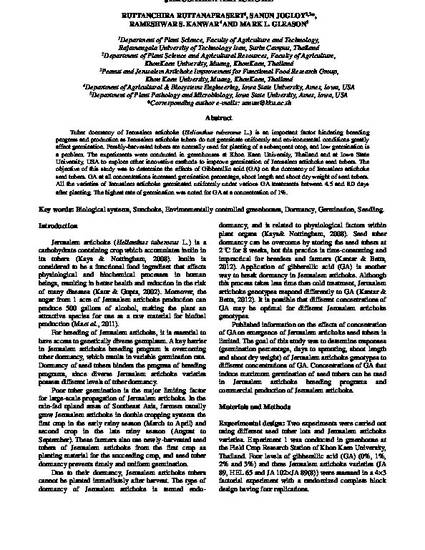
Tuber dormancy of Jerusalem artichoke (Helianthus tuberosus L.) is an important factor hindering breeding progress and production as Jerusalem artichoke tubers do not germinate uniformly and environmental conditions greatly affect germination. Freshly-harvested tubers are normally used for planting of a subsequent crop, and low germination is a problem. The experiments were conducted in greenhouses at Khon Kaen University, Thailand and at Iowa State University, USA to explore other innovative methods to improve germination of Jerusalem artichoke seed tubers. The objective of this study was to determine the effects of Gibberellic acid (GA) on the dormancy of Jerusalem artichoke seed tubers. GA at all concentrations increased germination percentage, shoot length and shoot dry weight of seed tubers. All the varieties of Jerusalem artichoke germinated uniformly under various GA treatments between 4.5 and 8.0 days after planting. The highest rate of germination was noted for GA at a concentration of 1%.
Available at: http://works.bepress.com/rskanwar/181/

This article is published as Ruttanaprasert, R., S. Jogloy, R.S. Kanwar, and M.L. Gleason. 2017. Gibberellic acid effect on tuber dormancy of Jerusalem artichoke under greenhouse conditions. Pakistan Journal of Botany 50(2):741-748. Posted with permission.